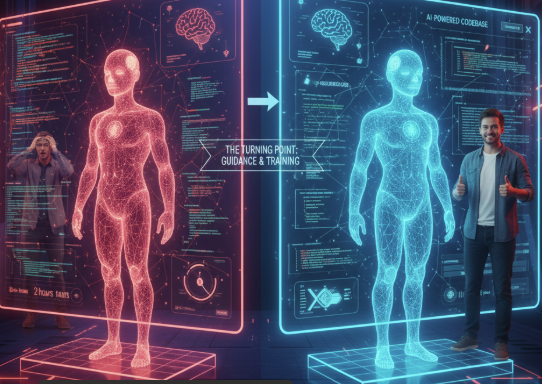From a Frustrating Intern to a High-Performing Co-Developer

The initial promise of AI-powered coding was a magic black box. You'd whisper a command, and out would come a perfectly formed, production-ready block of code.
The reality, as many of us have discovered, is often more like dealing with a brilliant but frustratingly literal intern. It's incredibly fast, knows a vast amount, but has zero context, no common sense, and will happily and confidently build the wrong thing if your instructions are even slightly ambiguous.
I spent months in this frustrating cycle: give a prompt, get flawed code, debug the code, fix the prompt, try again. It felt inefficient, like I was spending more time correcting the AI than it was saving me.
Then, I changed my approach entirely.
I stopped treating my AI like an oracle to be consulted and started treating it like a new team member - a junior developer who is incredibly smart but needs to be onboarded, mentored, and guided. This shift in mindset was a game-changer, and it's all built around a simple, five-prompt ritual that I now use for almost any complex coding task.
---
The Five-Prompt Ritual for AI Collaboration
This isn't about crafting a single, perfect, 1,000-word prompt. It's about creating a dialogue. It's a process of alignment that ensures the AI and I are on the exact same page before a single significant line of code is written.
Step 1: The Onboarding - Setting the Frame
Before I ask for anything, I set the context. I don't treat the AI as a servant; I invite it to be a peer. My first prompt is almost always:
"You are my co-developer. Here is the code [or the problem description]. What do you think?"
This simple framing changes everything. It primes the model to think critically and collaboratively, not just to obey commands. It's like saying to a new teammate, "Welcome to the project. Here's what we're working on. I'm looking for your input."
Step 2: The Sanity Check - Verifying the Brief
This is the most critical step, the one that has saved me more hours than any other. I never assume the AI understood me. I force it to prove it.
"In your own words, please explain to me what I am asking for."
This is the ultimate "measure twice, cut once." The AI's paraphrased response is a perfect mirror of my own communication. If its explanation is muddled, it means my request was muddled. It instantly reveals any misunderstanding, any ambiguity, any logical gaps in my own thinking. I keep iterating on my request and asking this question until its understanding perfectly matches my intent.
Step 3: The Critical Review - Forcing Justification
Once I'm confident the AI understands the "what," I challenge it on the "how." I don't want a passive tool; I want an active participant that can improve my own ideas.
"Is this approach correct? If so, why? If not, why not?"
This prompt forces the model out of a purely generative mode and into an analytical one. It has to defend the proposed solution, which often uncovers edge cases, performance considerations, or alternative libraries I hadn't thought of. Sometimes, it confirms my approach is sound. Other times, it provides a much more elegant solution.
Step 4: The Blind Spot Analysis - Uncovering Hidden Work
A prototype is easy. Production-ready code is hard. The difference lies in all the "invisible" work: error handling, logging, testing, and dependencies. To make sure we're not just building the happy path, I ask one of my favorite questions:
"What are we missing?"
This simple, open-ended question is incredibly powerful. It prompts the AI to think about the surrounding ecosystem of the code. It will often respond with suggestions like, "We are missing error handling for API timeouts," or "We should add logging to this function," or
"This approach won't handle concurrent requests well." It helps turn a fragile script into a robust application.
Step 5: The Action Plan - Building the Roadmap
Only after we have completed the first four steps - after we're aligned on the context, the goal, the approach, and the hidden requirements - do I give the green light. And I don't just say, "Go." I ask for a clear plan of attack.
"Create a detailed task list."
This is the payoff. The AI will now generate a step-by-step, actionable list for building the feature. This list becomes our shared roadmap. I can tackle some tasks, I can assign some to the AI, but we are both working from the same, mutually understood plan.
The Dialogue Over the Monologue
The future of AI-assisted development isn't a monologue where we issue commands to a black box. It's a dialogue. It's a partnership.
This five-step process isn't about slowing down. It's about being deliberate. It's about replacing the frustrating cycle of prompt-fail-debug-repeat with a professional, collaborative workflow. It has made my code better, my process faster, and, most importantly, it has made me a better developer by forcing me to think more clearly.
Stop treating your AI like an intern you have to manage. Start treating it like a co-developer you can mentor, and watch what you can build together.